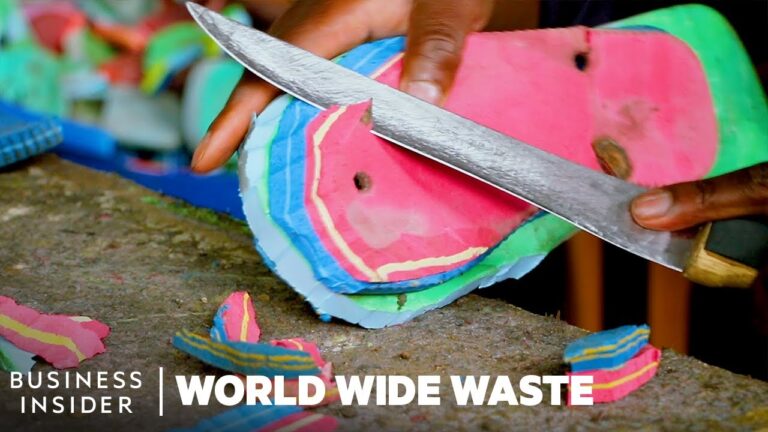A Brief History of Flip-Flops Based on Public Facts
- Flip-flops are a type of light sandal, typically worn as a form of casual footwear. They are one of the the most popular. sandal category today and billions are produced every year.
- They consist of a flat sole held loosely on the foot by a Y-shaped strap known as a toe thong that passes between the first and second toes and around both sides of the foot or can be a rigid base with a strap across all the toes.
- In the United States the flip-flop has been popularised from the Japanese zōri, after World War II as soldiers brought them back from Japan. They became a prominent unisex summer footwear starting in the 1960s.
- Thong sandals have been worn for thousands of years, dating back to pictures of them in ancient Egyptian murals from 4,000 BC. A pair found in Europe was made of papyrus leaves and dated to be approximately 1,500 years old.
Learn How one company in Kenya turns these old sandals into colourful Works of Art.
- These early versions of flip-flops were made from a wide variety of materials. Ancient Egyptian sandals were made from papyrus and palm leaves. The Maasai people of Africa made them out of rawhide.
- In India, they were made from wood. In China and Japan, rice straw was used. The leaves of the sisal plant were used to make twine for sandals in South America, while the natives of Mexico used the yucca plant.
- The Ancient Greeks and Romans wore versions of flip-flops as well. In Greek sandals, the toe strap was worn between the first and second toes, while Roman sandals had the strap between the second and third toes.
- In India, a related chappal sandal was common, with no straps but a small knob sitting between the first and second toes. They are known as PADUKAS.
Learn about Turning Flip Flops into Art with Ocean Sole
Did you know we throw away more than 90 tonnes of flips flops every year? Many of them end up in the ocean and on beaches. We went to Kenya to see how Ocean Sole turns washed up flip flops into amazing, colourful sculptures!
BBC What’s New


